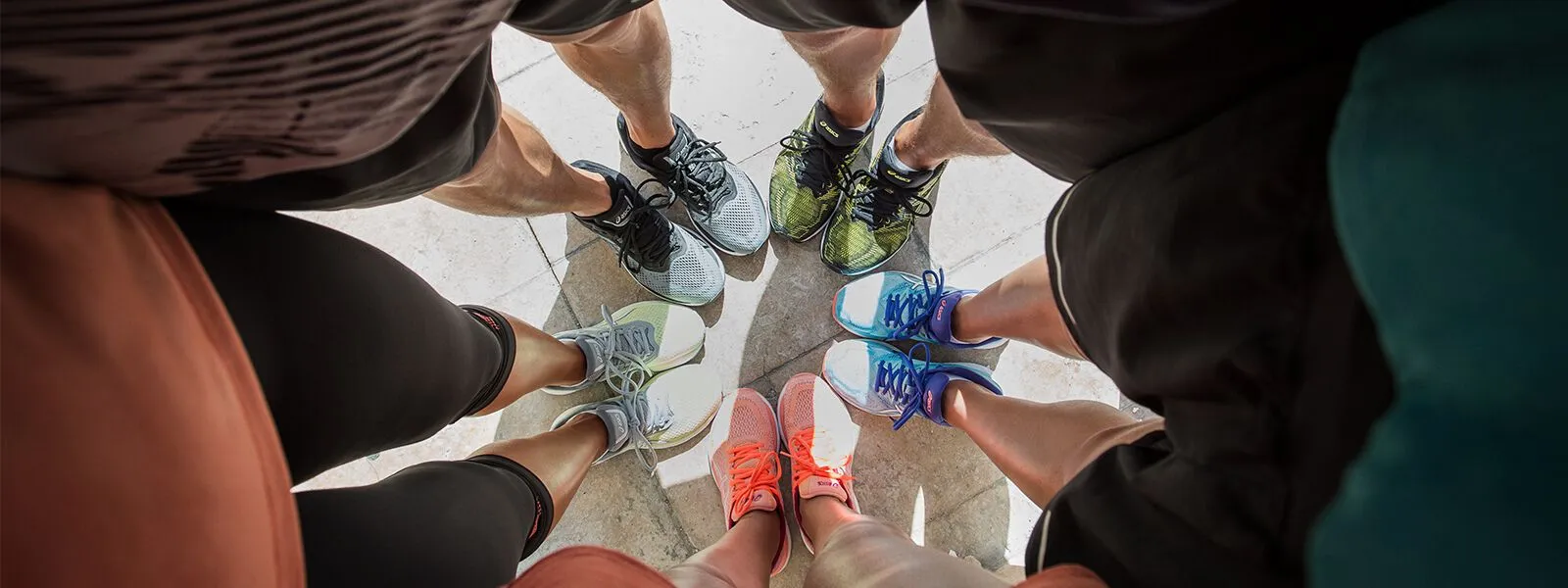
How to choose the right running shoes
July 20, 2018
No matter how much you might like the look of a particular shoe, finding the correct running shoe for you should involve much more than just making an aesthetic decision. The best running shoes will carry you many a mile, uphill and down, in all types of weather, so it’s essential you get it right.
In this guide, we’re going to take you through the important factors you should consider when choosing the correct running shoe.
Table of contents
1. Understand what is meant by pronation
2. Know different running shoe types
3. What distance will you cover?
4. Picking the right size shoe
5. You get what you pay for
How to choose running shoes for beginners
When buying running shoes, it’s useful to learn a bit more about some of the following factors that should influence your decision.
1. Understand what is meant by ‘pronation’
Pronation is the natural movement that occurs when your foot lands while you’re running or walking. There are a number of different pronation types, and understanding which applies to you will help you to choose the correct running shoe.
- Neutral pronators are those whose feet initially strike the ground with the outside heel and who move onto the balls of their feet evenly.
- Overpronators roll too much onto the inside of their feet when they strike the ground, which is often due to a low arch or a flat foot.
- Underpronators roll too much onto the outside of their feet when they strike the ground, which is usually as a result of a high arch.
As a general guide, neutral pronators can wear a wide variety of running shoes. Underpronators typically need a lot of cushioning on their running shoes to avoid impact injuries, while overpronators should think about choosing running shoes that provide structured cushioning. Read our guide to pronation to find out why it matters and for help determining what pronation type applies to you.
2. Know the different types of running shoes
Once you know how your feet strike the ground, the next step is to understand which running shoes provide the support you need:
- Neutral-cushioning shoes – These running shoes have the most curved shape. If you’re an underpronator with a high arched foot then a neutral-cushion shoe is likely to be the correct running shoe for you.
- Stability shoes – Stability shoes have a semi-curved shape and offer a good balance of cushioning and support. If you have a normal arch and are a neutral pronator then this type of running shoe should be a good fit.
- Motion-control shoes – Motion control shoes have a wide, straight shape that makes them well-suited to those with flat feet who are prone to overpronating. This type of shoe provides maximum support and control to prevent overpronators from rolling too far inwards.
- Trail-running shoes – Trail-running shoes share many of the characteristics of the above shoes but are also designed with much more aggressive tread patterns to cope with terrain such as mud and rocks.
3. What distances will you cover?
Another important factor when choosing the correct running shoe for you is to think about the sort of distances you’ll be covering. If you’re training for a marathon, then you’ll require a more cushioned shoe that can withstand all those hard miles and provide maximum protection from impact injuries. If you want to run at a faster pace over shorter distances, then lightweight running shoes, which weigh less and come with more flexible cushioning, are incredibly comfortable and can decrease your fatigue during a run.
4. Picking the right size shoe
You might assume that if you wear, say, a size 8 casual or smart shoe, you’ll need the same size running shoe. However, that’s not always the case. The impact forces on your foot when you run cause it to spread inside the shoe much more than if you were walking. That extra spread can make your size 8s feel a little bit cramped.
When it comes to fitting running shoes, the following tips can help. As a simple rule of thumb, when you push your heel firmly into the back of the shoe, there should be a thumb’s width of space between the top of your big toe and the very front of the shoe. If you’re buying running shoes online, use our shoe size guide.
5. You get what you pay for
Due to the innovative technology involved, quality running shoes tend to be quite expensive. However, you can rest assured that a higher price does generally correlate to more comfort and better features. Opting for a cheaper pair of shoes often means they haven’t been designed with running in mind and will struggle to withstand the demands they’re subjected to. That said, you do not have to go out and buy the most expensive shoes you can find in order to experience a comfortable, stable and well-supported run.
Where to get advice on running shoes
If you’re unsure about finding the right running shoe, there are several places you can go for advice and running shoe recommendations:
- Go to a running club: A great source of knowledge on running shoes is, of course, other runners! Head to your local running club and ask other members their advice on running shoes.
- Running shops: There are many independent running footwear shops in towns and cities across the country. Staff at these shops can provide running shoe recommendations based on your pronation, running style and ambitions.
- ASICS blog: We’ve got tons of helpful advice on running shoes, clothes and other information on our blogs and in our shoe finder tool.
Find the best running trainers at ASICS
At ASICS, we feature a premium range of men’s and women’s running shoes and trail running shoes for every runner and running type.
Whether you’re looking for road running shoes, trail running shoes, or indeed the GT-2000 9 Trail, which are the best running shoes for both road and trail, we’ve got the complete range.
